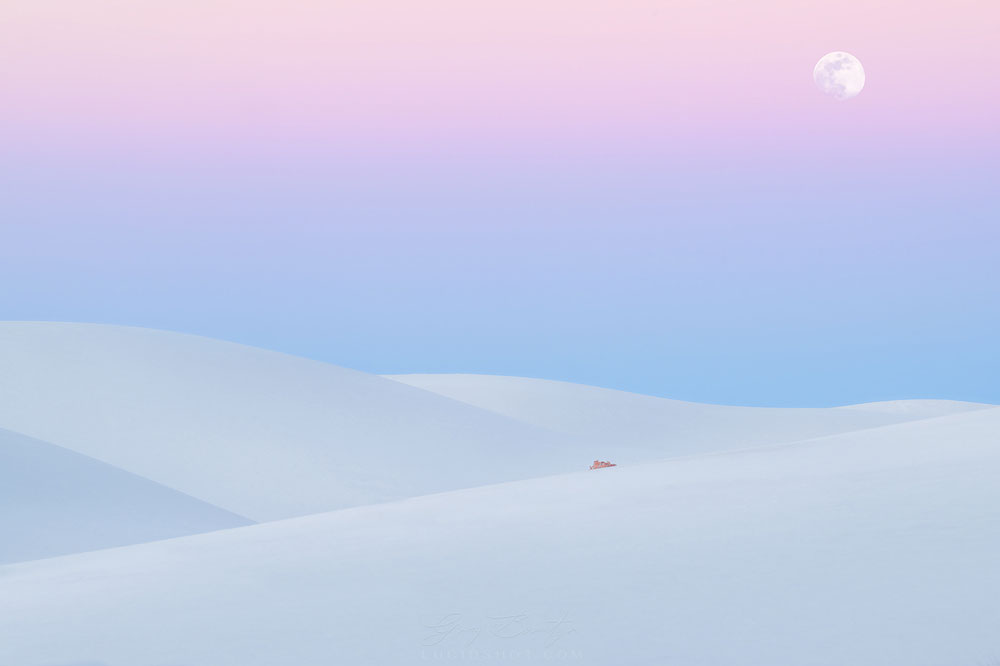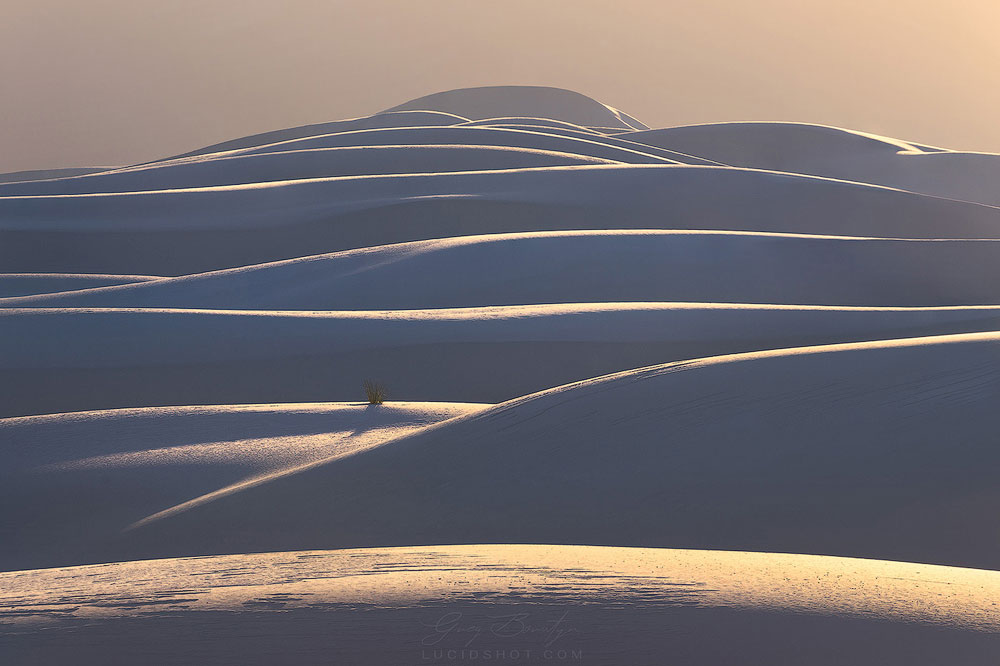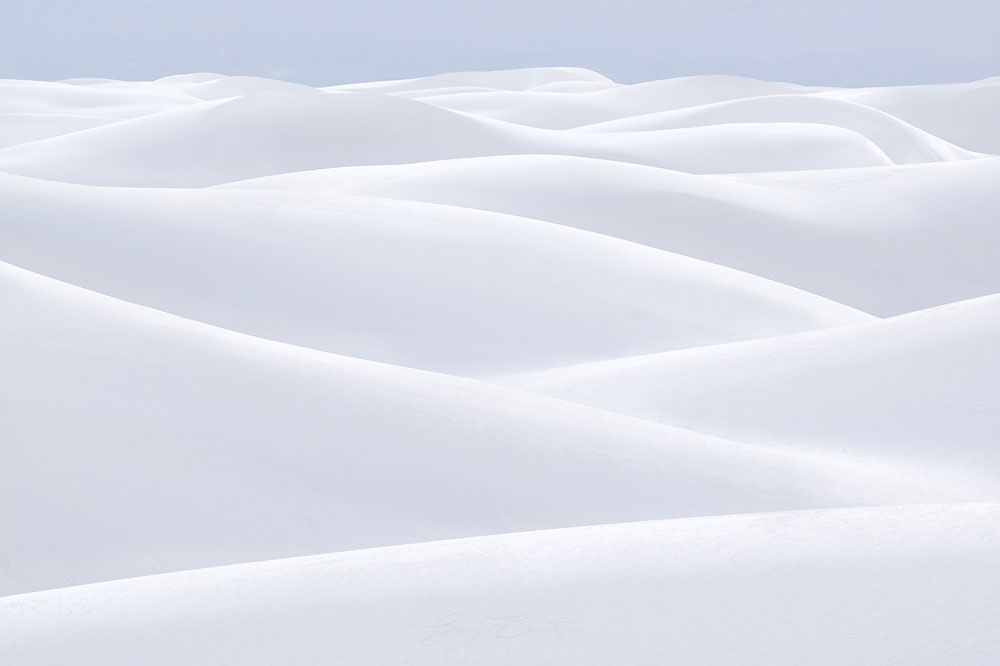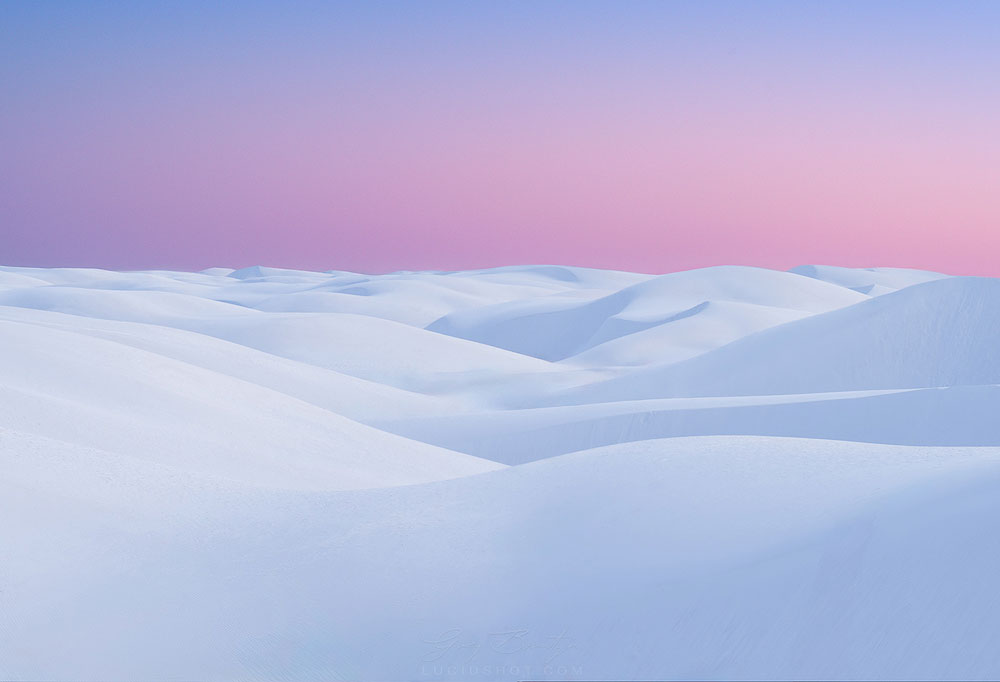In January, I had the incredible opportunity to visit White Sands National Park in New Mexico, a place that feels like another world. Spanning over 275 square miles, this vast sea of glistening gypsum dunes is the largest of its kind on Earth. The landscape is surreal—rolling waves of white sand stretch endlessly under a vast blue sky, creating a dreamlike setting perfect for photography.
A Photographer's Paradise
Visiting in winter was an excellent choice. The cooler temperatures made exploring the dunes more comfortable, and the low sun angle added stunning contrasts and shadows to the landscape. The white sands reflected the sunlight beautifully, creating soft, ethereal tones in my images.

The Gear
I used a Nikon 180-600mm f/4.5-5.6 S telephoto lens for many of my shots, allowing me to capture compressed perspectives of the dunes and distant mountain ranges. For more intimate compositions focusing on just a few dunes, I relied on my Nikon 24-120mm f/4 S lens. These two lenses gave me the flexibility to frame everything from vast landscapes to intricate textures in the sand.

Timing
Despite the park officially opening at 7 AM, I was still able to capture sunrise shots because, in January, the sun rises just after 7 AM. Additionally, the mountains to the east block the sun for an extra 10 to 15 minutes, providing a little more time to prepare for those perfect golden-hour compositions. Later in the evening, during blue hour, the soft pink glow of the Earth illuminated the dunes in a truly magical way, creating a stunning contrast against the white sand.

What to Expect & Tips for Visiting
If you're planning a trip to White Sands, here are some tips to make the most of your visit:
- Best Time to Visit: Early morning or late afternoon for the best lighting and fewer crowds. The golden hour and blue hour both offer stunning photographic opportunities.
- Photography Tips: A telephoto lens (like my 180-600mm) is great for compressing the dunes, while a mid-range zoom (like my 24-120mm) works well for more intimate compositions. Be sure to bring a polarizing filter to cut glare and enhance contrast.
- Park Hours & Restrictions: Unlike most national parks that are open 24/7, White Sands closes every day due to its proximity to a missile testing range. In winter, the park officially closes at 5:30 PM, but rangers often allow visitors to stay an extra 15 to 30 minutes before asking everyone to leave. Always check the official website for possible closures due to missile tests.
- Exploring the Dunes: Hiking in the dunes can be tiring! The sand is soft, so it's best to hike for half a mile, rest, and take in the views before continuing. There are dunes in every direction, so there's no need to trek too far to find amazing compositions.
- Navigation & Safety: The landscape can be disorienting, especially after a mile or so, when everything starts to look the same. I highly recommend using an app like AllTrails on your iPhone to track your route, making it easy to find your way back to your car. Also, bring plenty of water—even in winter, dehydration can sneak up on you!

An Unforgettable Experience
Walking through White Sands felt like stepping onto another planet. The silence, broken only by the wind or the crunch of sand underfoot, made for a peaceful and meditative experience. With the unique lighting conditions, stunning landscapes, and ever-changing patterns in the dunes, it was an absolute dream location for photography.
I'm excited to share some of the images I captured from this trip—each one tells a story of this mesmerizing landscape. If you've ever been to White Sands or are planning to visit, I'd love to hear your thoughts! Let me know what you think, and stay tuned for more travel and photography adventures.